

| PRIMECLUSTER Installation and Administration Guide 4.1 (for Solaris(TM) Operating System) |
Contents
Index
 
|
| Part 2 Installation | > Chapter 6 Building Cluster Applications | > 6.6 Setting Up Cluster Applications | > 6.6.1 Setting Up Resources |
Set up resources for the disk classes that are defined in Global Disk Services (GDS).
The disk classes must be created before this screen is used.

If a disk class is registered to a Gds resource when equivalent volume copy is being executed, the equivalent copy operation is canceled. Therefore, the data becomes invalid in some of the slices. However, recovery is not necessary because equivalent copy is executed automatically when the volume is started. If you want to recover the slice state before the volume is started, complete Gds resource setup and then start equivalent copy. For instructions on starting equivalent copy, see "5.3.4 Copying Operation" or "D.10 sdxcopy - Synchronization copying operation" in the "PRIMECLUSTER Global Disk Services Configuration and Administration Guide."
For instructions on creating disk classes, see "Setting Up Shared Disks."
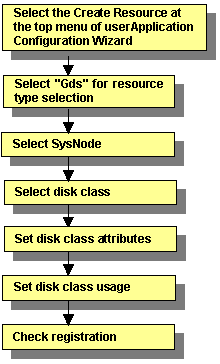
For information on the above operations up to "Select SysNode," see "Creating Cmdline Resources." This section describes the operations starting from "Select disk class."
 Selecting the disk class
Selecting the disk classSelect the disk class.
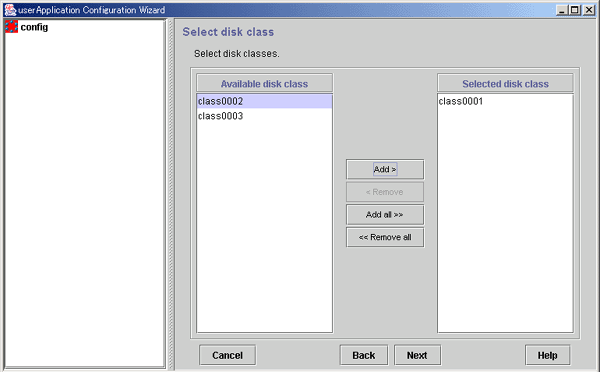
Select disk classes from Available disk class, and then click Add. To add all listed disk classes, click Add all. To delete a disk class to be set, select the disk class to be deleted from Selected disk class, and then click Remove. To delete all listed disk classes, click Remove all.
After completing the setup, click Next to go to the "Set Disk Class Attribute" screen.
 Disk class attribute setup
Disk class attribute setupSet the disk class attribute.
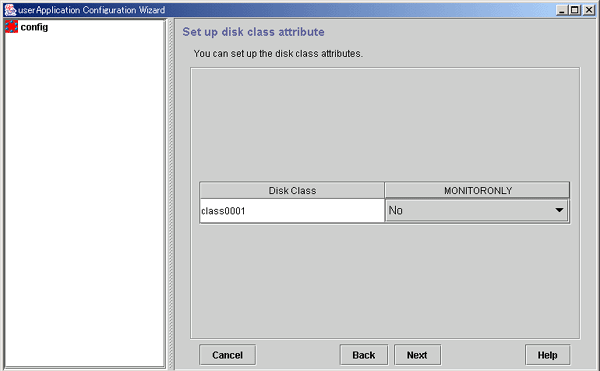
|
Flag |
Outline |
|---|---|
|
MONITORONLY |
This flag determines whether disk class failures are to be reported to the userApplication. If "Yes" is set and a disk class failure occurs, the disk class is switched to faulted state but the Gds resources remain online, and userApplication failover does not occur. Carry out the preliminary design, including the higher applications" before determining the disk classes for which this flag is to be set to "Yes." |
The MONITORONLY attribute must be set to "No" for at least one disk class.
This will prevent userApplication failover in the event of all disk class failures and RMS' notifying the upper applications of the failures.
After completing the setup, click Next to go to the "Set up disk class use" screen.
 Setting the disk class use
Setting the disk class useConfigure the use of the disk class.
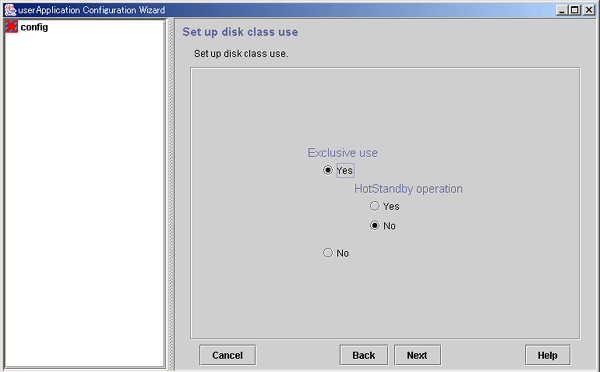
Specify the options according to the use of the shared disk.
After completing the setup, click Next to go to the "Confirm Registration Information" screen.
 Shared disk uses
Shared disk uses|
Use |
Exclusive use |
HotStandby operation |
|---|---|---|
|
Switched disk |
Yes |
No |
|
Shared disk for simultaneous access |
Yes |
Yes |
|
Simultaneous shared disk |
No |
- |
Shared disks have the following features for each use:
Only the OPERATING node can use the shared disk.
The non-OPERATING nodes cannot access the volume.
All nodes can use the shared disk simultaneously.
Select this use if applications that require disk access from a node other than the OPERATING node are set inside the same userApplication.
The exclusive control for maintaining data integrity in the shared disk must be handled by the applications, and not by PRIMECLUSTER.
Select this use if multiple userApplications share the disk classes. An example is when Oracle real application clusters are used.
The exclusive control for maintaining data integrity in the shared disk must be handled by the applications, and not by PRIMECLUSTER.

 Checking registration information for Gds resources
Checking registration information for Gds resourcesCheck the registration information for the Gds resources. You can also set resource attributes by selecting the Attributes tab and switching the screen.
For information on the resource attributes, see "Attributes."
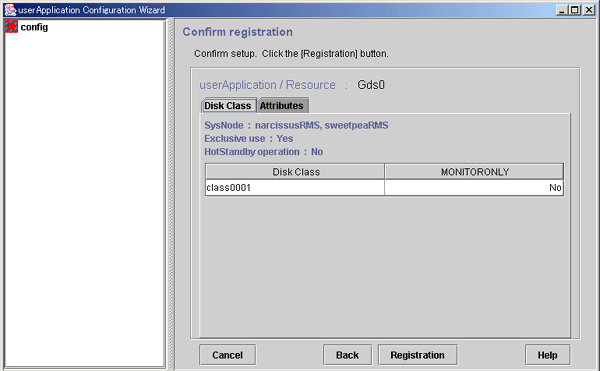
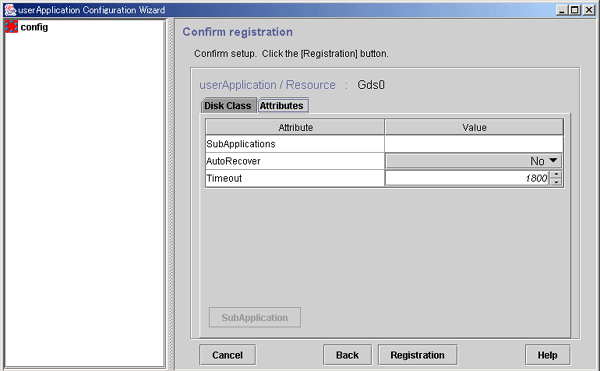
Check the registration information, and then click Registration.
Contents
Index
 
|